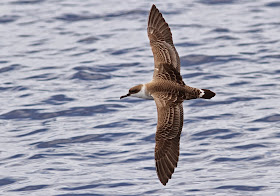AN INTRODUCTION TO THE NATURAL HISTORY OF THE AZORES
Birds, butterflies, dragonflies, mammals and endemic botany of the Azores
Birds, butterflies, dragonflies, mammals and endemic botany of the Azores
DAY ONE
Setting the Scene
A landscape and geology tour on Sao Miguel with volcanologist Dina, exploring the volcanic origin of the Azores and understanding the landscape.
Sete Cidades Caldera complex, Sao Miguel- the inside of a huge volcano
Looking east over Sao Miguel over a volcanic landscape of small volcanic cones and huge volcanic complexes in the distance.
The endemic race of the Common Buzzard B.b.rothschildi are frequent over the volcanic slopes
DAY TWO
Wetlands and coastline
An exploration of the coastal habitats and the wetlands of Terceira CRW, looking at coastal botany and the wetland habitats around Praia da Vitoria, including the famous Cabo da Praia quarry which is the best place in the Western Palearctic biozone to see American shorebirds. Morning visit to the Santa Barbara reserve.
Semi-palmated Sandpiper at Cabo da Praia Quarry
Short-billed Dowticher at Cabo da Praia Quarry
Red-veined Darter- a resident on the Azores
Atlantic Canaries- can be found across various habitats
Lunch on the cliffs with Isabelle and Cecilia
Azorean Heather growing on an old lava flow
The endemic Myosotis maritima (Coastal Forget-me-not)
DAY THREE TO FIVE
The Marine Environment
An exploration of the marine environment from Graciosa island, exploring the Bank of Fortune to see the endemic Monteiro's Petrel, local and rare seabirds and also the whales, dolphins and other marine life of the area.
Cory's Shearwater- an abundant local breeding species
Great Shearwater- a regular visitor from the south Atlantic
Blue Shark and pilot fish- a pelagic predator that is attracted to the chum on the pelagic trips
Monteiro's Petrel (Rafael Armada)- an Azores endemic, with the entire world population breeding on the islets off Graciosa and can be seen at sea on the nearby Bank of Fortune. Other local breeding seabird species include Bulwers Petrel, Grant's Petrel, Barolo Shearwater and Roseate Tern
The Bank of Fotune also hosts large populations of cetaceans including Spotted Dolphin (above pic by Vincent Legrand). Recent pelagic trips have recorded Spotted, Common, Bottlenose, Striped and Risso's Dolphin and Sperm, Northern Bottlenosed, Sowerby's Beaked, Cuvier's Beaked, and Minke Whale.
Zino's Petrel (Harro Muller) - various rare seabirds have been seen on the Bank of Fortune or nearby in recent pelagic trips including this Zino's Petrel (one of the rarest seabirds in the world), Trindade Petrel, Black-capped Petrel, Brown Booby and it also appears the bank is a regular spot for the enigmatic Swinhoe's Petrel. Wilson's Storm Petrel are regular. In recent years a pair of Sooty Tern have been holding territory/breeding in the area.
Pelagic photography off the Bank of Fortune
DAY SIX
Azores Bullfinch (Priolo), endemic landbirds and the Laurissilva Forests
Exploration of the Laurel Forests of the Azores to look for endemic plants, insects and the endemic Azores Bullfinch. Also to look the conservation work of the area protecting the endemic ecosystem.
Laurissilva (Laurel Forest)- a suite of species from an ancient assemblage that once covered large areas of Europe but is no confined to the Macronesian islands. Typical shrub species include Azorean Holly, Azorean Blueberry, Azorean Cherry, Azorean Heather, Azorean Laurustinus, Azorean Juniper and Azorean Laurel.
The Azores Bullfinch- endemic to the Laurel Forests of the Azores with a world population of between 700 and 2200 birds
Azorean Chaffinch (Fringilla coelebs moreletti) - an endemic sub-species. Other endemic bird forms include Common Quail (C.c.conturbans), Azores Gull (L.c.atlantis), Common Buzzard (B.b.rothschilidi), Woodpigeon (C.p.azorica), Grey Wagtail (M.c.patriciae), Blackbird (T.m.azorensis), Blackcap (S.a.gularis), Goldcrest (R.r. azoricus and other island forms), Starling (S.v.granti),
Hypericum foliosum - an Azores endemic
Azores Grayling- an endemic butterfly found at higher altitudes on the Azores
Clouded Yellow- one of several species of butterfly including Azores Grayling, Clouded Yellow, Painted Lady, Red Admiral, Long-tailed Blue and also american visitors such as American Painted Lady and Monarch.
Azorean Laurel
Azores Nature kit
The tour will be led by Azores Nature, travel arrangements by Azores Choice with specialist guides and services from SPEA, Comunicair, Geofun, Gerby, Life CWR and Nautigraciosa.
If you're interested in joining a trip please email me for more details: littleoakgroup@btinternet.com
All trips will be collecting new wildlife data/records, supporting sustainable local businesses and contributing to local conservation.
AZORES NATURE is a not-for-profit initiative, aimed at exploring and contributing to the recording of the natural history of the Azores.














%2C%2BJune%2B2011.%2BRafael%2BArmada.%2BRA20110601_40591.jpg)



































